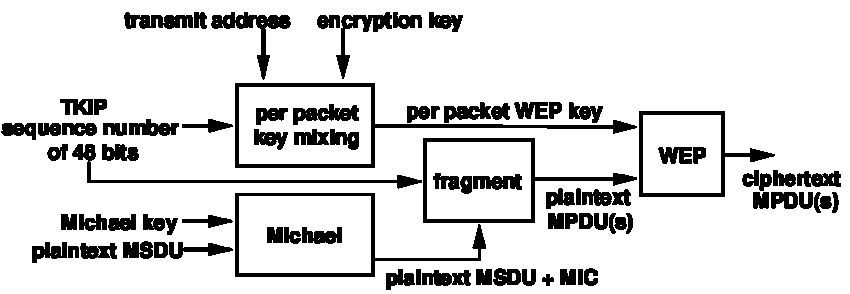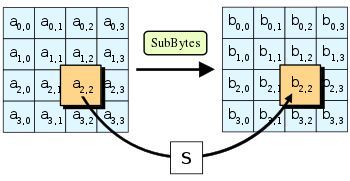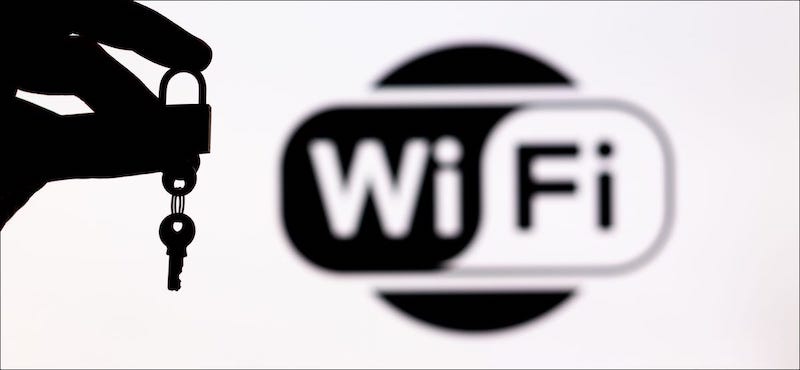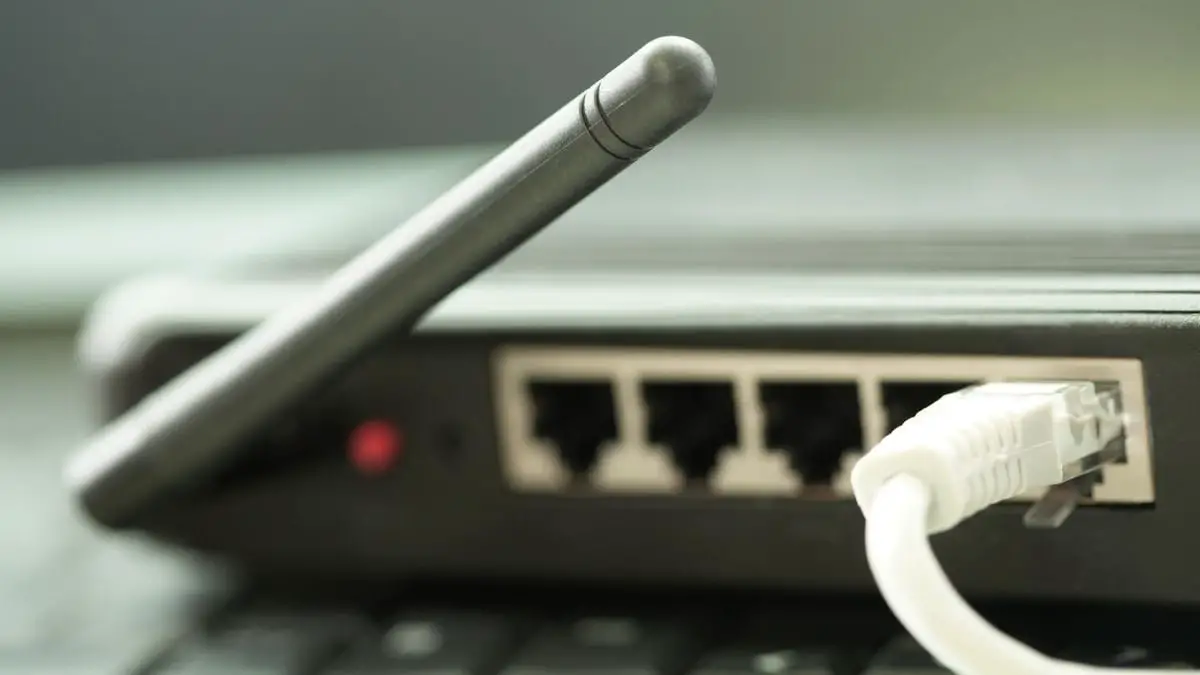The encryption standards WPA2-AES and WPA2-TKIP are used on all modern routers, so we prepared a comparison to see which is better to protect our WiFi networks and passwords.
- Intel buys Rivet Networks, creators of Killer communications chips
- How to find a saved Wi-Fi password in Windows 10?
- Zoom can leak Windows 10 network login information
Why do you need to use an encryption algorithm with WiFi security?
Encryption algorithms are used to keep data safe and secure. WiFi security is necessary for the protection of your personal information, like passwords or credit card numbers.
What Is WPA Wi-Fi Security?
WPA stands for Wi-Fi Protected Access, a security protocol that is used with wireless networks. The WPA standard allows users to connect wirelessly to a network using any compatible device and is one of the most widely used wireless security methods.
WPA Wi-Fi Security was introduced in 2004 and is now the most popular type of wireless network security. It uses a passphrase that is used to create a shared key between the wireless router and your device.
WPA Wi-Fi Security also uses an encryption key to encrypt data before it travels over the network.
What is WPA2?
Wi-Fi Alliance has developed Wi-Fi Protected Access 2 (WPA2) as a security certification program in order to secure wireless networks. It presents various encryption options according to the type of your WiFi router. But the most popular ones among them is WPA2-Personal, since it has been used by millions of devices at homes or small businesses. It brings two encryption modes that are called Advanced Encryption Standard (AES) and Temporal Key Integrity Protocol (TKIP), and a combination of both as AES + TKIP.
Is WPA2 secure?
Before WPA2 and WPA, wireless routers and access points used WEP standard, which basically communicates with the RC4 cipher. With this method, all users of the wireless network share the same key and thus, be vulnerable to attacks.
The following protocol WPA-PSK had a similar problem, the communication is encrypted but with a common key. It used a secret password to encrypt, but once it is cracked, all data and network packets could be monitored.
Next protocol was WPA2-PSK, which used a pre-shared key just like WPA-PSK. Now this was more secure, but still vulnerable.
We have WPA3 now, which is currently seen as the most secure option. So if possible, upgrade your WiFi routers and access points to the ones that support WPA3.
What are the differences between WPA, WEP, and WPA2?
The main difference between WPA and WEP is that the former uses a four-way handshake while the latter uses a two-way handshake. This means that with WPA, each party must agree to a key before the connection can take place, while with WPA2, each party must be authenticated before the connection can take place.
WPA2 also uses AES encryption instead of RC4.
What is TKIP?
WPA-PSK (TKIP) is a newer form of WEP that has been used in 802.11 wireless networks since March 2003, with some security enhancements added to the encryption
TKIP, or Temporal Key Integrity Protocol, is a cryptographic protocol that provides message integrity and replay protection for WPA2 wireless networks. It was designed to ensure the confidentiality of Wi-Fi traffic and to protect against network attacks.

While TKIP was supposed to be at least relatively more secure than WEP, the standard was deprecated in the 2012 version of Wi-Fi 802.11 after it was found to have security flaws that can be exploited by hackers without too much of a problem. This is because TKIP uses the same underlying mechanism as WEP and is therefore equally vulnerable to attack.
However, some of the new security features of the WPA-PSK (TKIP) standard, such as hashing packets, broadcast keys, and sequence counters, meant that some of the weaknesses of WEP could be eliminated.
What is AES?
AES is a symmetric block cipher that was released in 2001. It was designed by Ron Rivest, Adi Shamir and Leonard Mosenfeld. It has been adopted as an official standard by the National Institute of Standards and Technology (NIST).
AES (Advanced Encryption Standard) is a set of ciphers that is available in a block size of 128 bits and key lengths of 128, 192 or 256 bits, depending on the hardware. It’s a much more secure protocol , replacing the old Data Encryption Standard (DES) protocol that was originally released in the 1970s.

In contrast to its predecessor, AES does not use the Fiestel network and instead uses a design principle called the substitution permutation network as the basis for the block cipher algorithm. While some cryptographers occasionally provided evidence of alleged vulnerabilities in AES, all of them proved impractical or ineffective against a full AES-128 implementation.
What is the difference between TKIP and AES?
The difference between TKIP and AES is that the encryption algorithm used by TKIP requires a 64-bit key, which means it can support approximately 264 possible keys. This makes it impossible to brute force the key. TKIP has a block size of 128 bits and AES has a block size of 256 bits.
The security level between these two is that the encryption algorithm used by AES can be brute forced if the key size is not 128 bits.
What are the benefits of using a TKIP or AES protocol?
The main benefit of using these protocols is that they are more secure than WEP and have a better range.
There are many benefits to using TKIP or AES protocol for WiFi encryption. One of the biggest advantages is that it makes it easier to implement security in a large-scale setting. In addition, it offers features that make it easier to implement authentication and encryption of data on the WiFi network.
TKIP or AES: Which one to choose?
Modern routers and AES is a more secure encryption algorithm, but it takes longer to encrypt and decrypt files. TKIP is faster than AES, but it has been shown to have vulnerabilities that make it less than secure.
One of the benefits of using a TKIP protocol is that it encrypts and decrypts files faster than an AES protocol. However, there have been vulnerabilities in the TKIP protocol that make it less secure.access points allow you to choose between various encryption types to secure your WiFi network but not all of them are going to be secure. That is why we are going to focus on the WPA2 passwords that use TKIP or AES in this article.
First of all we want to remember the importance of correctly protecting our wireless networks. There are many types of attacks that intruders can use to break our security. That is why we must make use of tools and methods that can adequately protect us.
The fact that there are intruders on our networks can put your privacy and security at risk. Unwanted people may have access to other connected equipment as well as be able to collect personal information depending on your encryption type, method or protocol.
But in addition to this, as we can imagine, it will also pose a problem for performance. It is a fact that the more computers you have connected and using a network, the more problems regarding speed, quality and stability there may be. If we have intruders in our Wi-Fi it can suppose that the speed drops noticeably.

In short, protecting our wireless networks is going to be fundamental and that we must always keep in mind. That yes, it is necessary to correctly choose the key that we are going to use, as well as the type of encryption within the possibilities that we have at our disposal.
TKIP vs AES passwords
Among the options that we can see when using Wi-Fi encryption, possibly the most used are WPA2-AES and WPA2-TKIP. It must be said that today they are the safest, since others such as WEP and WPA (both in their different variants) have become obsolete and there are different tools that allow them to be exploited. This makes it not recommended to use them at present.
Now, within the two types that we can consider safe, they are not equally. And we can say that the ideal would be to use WPA2-AES. It is the most reliable type of encryption. It uses the latest Wi-Fi encryption standard and the latest AES encryption.
The TKIP encryption is discharged from the WiFi Alliance. This means that new routers should not use it as it is not considered fully secure today. Therefore whenever possible we should avoid it.
WPA2-TKIP uses the modern WPA2 standard but makes use of old TKIP encryption. Hence, its use is not recommended today if we want to maximize the security of our networks.
We can say then that while choosing between the Wi-Fi encryption modes TKIP or AES, the safest option is to use the first option. It is the one that will offer us a greater guarantee and have fewer security problems that can compromise our networks.
Keep in mind that there are also differences in speed. If we use WPA2-AES we will obtain better results, while WPA2-TKIP is affected when sending packets and receiving data. It is another of the factors that we must take into account, beyond the security that is logically the main one.
Why TKIP is vulnerable?
Cisco says that the TKIP encryption is vulnerable to packet decryption by a possible attacker. But mind you, only the authentication key can be stolen by a hacker. So they won’t be able to reach the encryption key and thus, reach our personal data. But with the auth key, they can log in to network and then reach devices by using other methods.
Are there any compatibility issues?
However, keep in mind that on certain occasions it will be impossible to use WPA2-AES. The reason is that some older devices will not be able to connect to networks that use this more modern encryption and have to make use of WPA2-TKIP.
This is one of the disadvantages that we can find in certain situations. Some users are forced to use older encryption such as WPA2-TKIP in order to connect other computers.
How to choose what encryption algorithm you use for your network?
Choosing an encryption algorithm for your network is not a complicated task but you should make sure that the algorithm you choose is in accordance with your needs. There are many factors to consider when choosing an encryption algorithm, such as the type of data you are encrypting and how much protection is needed.





